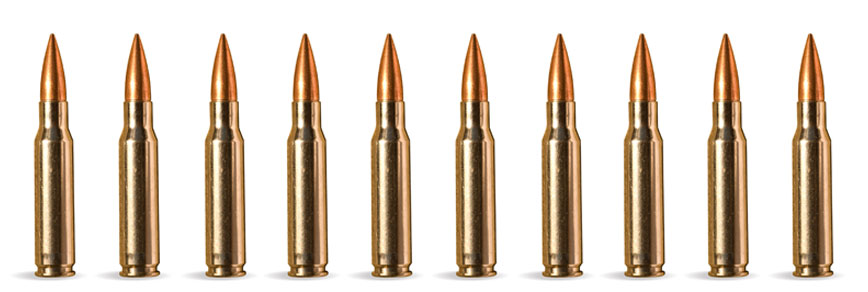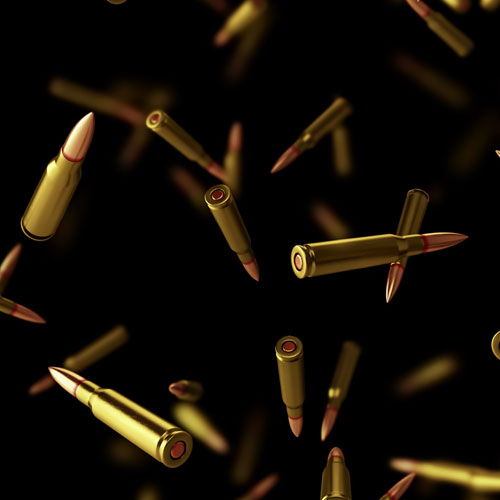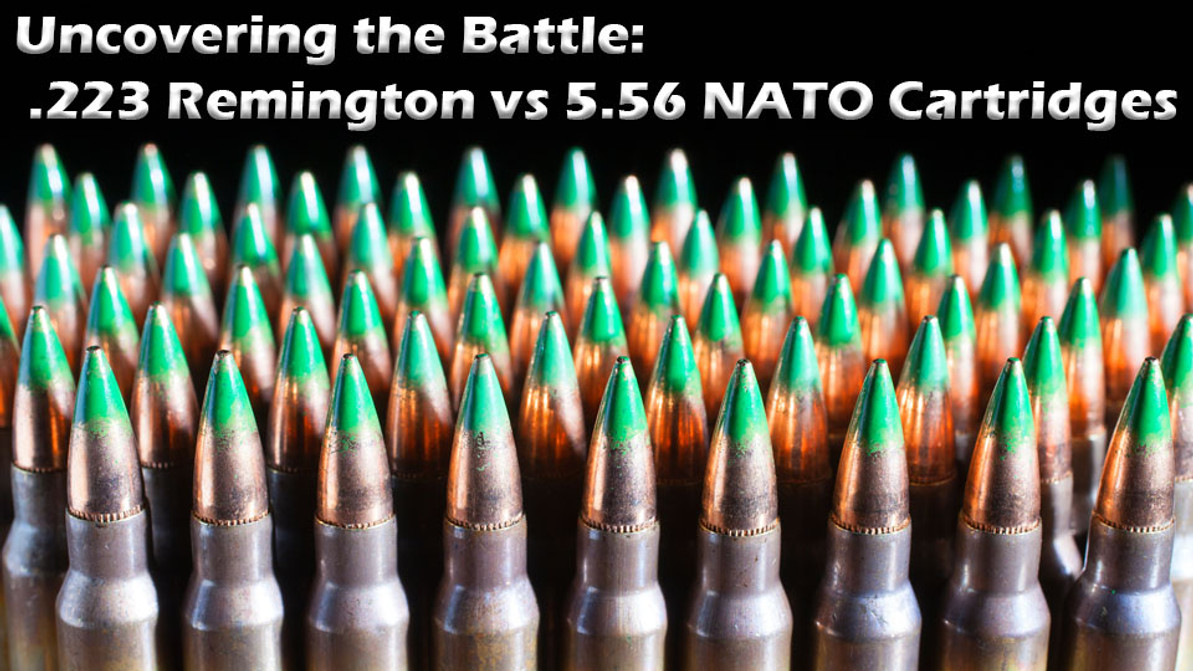Uncovering the Battle: .223 Remington vs 5.56 NATO Cartridge
Uncovering the Battle: .223 Remington vs. 5.56 NATO Cartridges
Are you in the market for a new cartridge for your hunting or shooting needs? With so many options out there, it can be overwhelming to choose the right one. Two of the most popular cartridges, the .223 Remington and 5.56 NATO, may look similar, but they have key differences that set them apart. From pressure levels and twist rates to terminal performance and compatibility, it's important to understand the nuances between these two rounds before deciding. In this comprehensive guide, we'll dive deep into the world of .223 Remington and 5.56 NATO cartridges and uncover the differences that matter most to you.
Cartridge Size
Cartridge size is one of the key differences between the .223 Remington and 5.56 NATO cartridges. The .223 Remington cartridge measures 2.26 inches, while the 5.56 NATO cartridge measures 2.26 to 2.49 inches, depending on the specific load. This difference in length results in a difference in overall capacity, with the 5.56 NATO having a slightly higher capacity due to its longer case. This can affect the velocity and terminal performance of the cartridge, with the 5.56 NATO generally providing a higher velocity and more stopping power than the .223 Remington. Additionally, the difference in cartridge length may impact the compatibility of the cartridge with your firearm, so it is important to ensure that you are using the correct cartridge for your specific firearm.
Pressure
Pressure levels between the .223 Remington and 5.56 NATO cartridges are another important difference. The .223 Remington operates at a lower maximum pressure level of around 55,000 psi, while the 5.56 NATO operates at a higher maximum pressure level of about 62,000 psi. This increased pressure level in the 5.56 NATO results in higher velocity and improved terminal performance compared to the .223 Remington. However, it also means that firearms designed for the .223 Remington may not be able to handle the higher pressure levels of the 5.56 NATO, so it is essential to ensure that your gun is compatible with the cartridge you plan to use. It is also important to note that shooting higher-pressure cartridges in a firearm not designed for them can be dangerous and may damage the gun or injury the shooter.
Terminal Performance

The terminal performance of a cartridge refers to how effectively it transfers its energy to a target. The 5.56 NATO cartridge generally has better terminal performance than the .223 Remington due to its increased pressure levels and higher velocity. This increased terminal performance is why the 5.56 NATO cartridge is often preferred for military and law enforcement applications, where stopping power is a critical factor. However, it is essential to note that terminal performance depends on factors such as bullet design and weight, so both cartridges can be effective when used with the right bullet. When choosing between the .223 Remington and 5.56 NATO cartridges, it is crucial to consider the specific target, the desired terminal performance, and the compatibility of the cartridge with your firearm.
Cost
The cost difference between the .223 Remington and 5.56 NATO cartridges can vary depending on several factors, such as the manufacturer, the location, and the current market conditions. However, generally speaking, the 5.56 NATO cartridge tends to be more expensive than the .223 Remington. This is partly due to the higher production costs associated with the 5.56 NATO's higher pressure levels and the increased demand for the cartridge. Some manufacturers may also charge a premium for the 5.56 NATO due to its military association and reputation as a high-performance cartridge. That being said, the cost difference between the two cartridges is only sometimes significant, and the final decision should be based on the specific needs and circumstances of the shooter. When choosing between the .223 Remington and 5.56 NATO, it is vital to consider the cartridges' cost and their performance, availability, and compatibility with your firearm.
Chamber Size
Chamber size is another crucial difference between the .223 Remington and 5.56 NATO cartridges. The .223 Remington cartridge was designed for use in firearms with a .223 Remington chamber, which has a slightly tighter bore and a shorter lead (the area before the rifling) compared to the 5.56 NATO chamber. On the other hand, the 5.56 NATO cartridge was designed for use in firearms with a 5.56 NATO chamber, which has a slightly looser bore and a longer lead. This difference in chamber size allows the 5.56 NATO cartridge to handle the higher pressure levels associated with the cartridge.
It is important to note that firing a 5.56 NATO cartridge in a firearm chambered for the .223 Remington can result in excessive pressure levels, which can be dangerous and may damage the gun or injury the shooter. Conversely, firing a .223 Remington cartridge in a gun chambered for the 5.56 NATO will not result in excessive pressure levels. Still, it may reduce velocity and terminal performance compared to the 5.56 NATO cartridge.
When choosing between the .223 Remington and 5.56 NATO cartridges, it is essential to consider the compatibility of the cartridge with your firearm's chamber. It is recommended to consult the manufacturer's specifications for your specific gun to determine the correct chamber size for your intended use.
Twist Rate
The twist rate of a barrel refers to the distance the bullet travels down the barrel in one full rotation. The twist rate affects the stability of the bullet as it travels down the barrel and is an essential factor to consider when choosing between the .223 Remington and 5.56 NATO cartridges.
In general, the twist rate of a barrel for the .223 Remington cartridge is 1:12 to 1:9, while the twist rate of a barrel for the 5.56 NATO cartridge is typically 1:7 to 1:8. The faster twist rate of the 5.56 NATO is necessary to stabilize the heavier and longer projectiles used in the cartridge. This faster twist rate also allows the 5.56 NATO cartridge to be used effectively with a broader range of bullet weights, from lightweight varmint projectiles to heavy-duty hunting bullets.
However, I would like to point out that the twist rate of a barrel is not the only factor that affects bullet stability. Other factors, such as the length and weight of the bullet, the velocity of the cartridge, and the pressure levels, can also play a role in determining the stability of a bullet. When choosing between the .223 Remington and 5.56 NATO cartridges, it is essential to consider the specific needs and intended use, as well as the compatibility of the cartridge with your firearm's barrel and twist rate.
Compatibility
The compatibility of the .223 Remington and 5.56 NATO cartridges is an essential factor to consider when choosing between the two. The compatibility of a cartridge with a firearm depends on several factors, including the chamber size, the barrel twist rate, and the pressure levels.
As mentioned earlier, the .223 Remington cartridge is designed for firearms with a .223 Remington chamber, while the 5.56 NATO cartridge is intended for use in weapons with a 5.56 NATO chamber. Firing a 5.56 NATO cartridge in a firearm chambered for the .223 Remington can result in excessive pressure levels, which can be dangerous and may damage the gun or injury the shooter. Conversely, firing a .223 Remington cartridge in a gun chambered for the 5.56 NATO will not result in excessive pressure levels. Still, it may reduce velocity and terminal performance compared to the 5.56 NATO cartridge.
In addition to chamber size, the compatibility of the .223 Remington and 5.56 NATO cartridges with a firearm also depends on the barrel twist rate and the pressure levels. As mentioned, the 5.56 NATO cartridge is designed for a faster twist rate and higher pressure levels than the .223 Remington cartridge. When choosing between the .223 Remington and 5.56 NATO cartridges, it is essential to consider the compatibility of the cartridge with your specific firearm and its specifications, including the chamber size, the barrel twist rate, and the pressure levels.
Availability
 The availability of .223 Remington and 5.56 NATO cartridges can vary depending on your location and the specific type of cartridge you are looking for. Generally, the .223 Remington and 5.56 NATO cartridges are widely available and can be found at most firearms dealers and sporting goods stores.
The availability of .223 Remington and 5.56 NATO cartridges can vary depending on your location and the specific type of cartridge you are looking for. Generally, the .223 Remington and 5.56 NATO cartridges are widely available and can be found at most firearms dealers and sporting goods stores.
The .223 Remington cartridge is a popular choice among hunters and sport shooters for its accuracy and relatively low recoil, and it is widely available in various bullet weights and types. Military and law enforcement organizations widely use the 5.56 NATO cartridge, and it is available in multiple loadings, including full metal jackets, hollow points, and boat-tail projectiles.
Regarding availability, the 5.56 NATO cartridge may have a slight advantage over the .223 Remington cartridge due to its widespread use by military and law enforcement organizations. However, both cartridges are widely available and can be found in most firearms dealers and sporting goods stores.
Ultimately, the availability of the .223 Remington and 5.56 NATO cartridges will depend on your specific location and the type of cartridge you are looking for. It is always a good idea to check with your local firearms dealer or sporting goods store for the latest availability and prices.
Conclusion
In conclusion, the .223 Remington and 5.56 NATO cartridges are popular among hunters and sport shooters. While they may look similar, they have several differences, including pressure levels, twist rates, terminal performance, and chamber compatibility. The 5.56 NATO cartridge is designed for firearms with a 5.56 NATO chamber, while the .223 Remington cartridge is intended for use in guns with a .223 Remington chamber. When choosing between the two cartridges, it is essential to consider the specific needs and intended use, as well as the compatibility of the cartridge with your firearm's chamber, twist rate, and pressure levels. Availability may also vary depending on location, but both cartridges are widely available and can be found at most firearms dealers and sporting goods stores. In the end, the choice between the .223 Remington and 5.56 NATO cartridges will depend on your individual needs and preferences, as well as the specifications of your firearm.
Recent Posts
-
Best AR-15 Handguards - MOE SL Handguard
In the world of AR-15 customization, handguards not only protect the barrel but are pivotal in enhan …Feb 5th 2025 -
Budget vs. Premium AR-15 Rifle Scopes: Are Expensive Optics Worth It?
When it comes to enhancing your AR-15's performance, selecting the right AR-15 rifle scope is crucia …Feb 2nd 2025 -
Top Lightweight Red Dot Sights for Minimalist AR-15 Builds
Choosing the right red dot sight for your AR-15 is more than just picking a well-known brand—i …Jan 30th 2025




